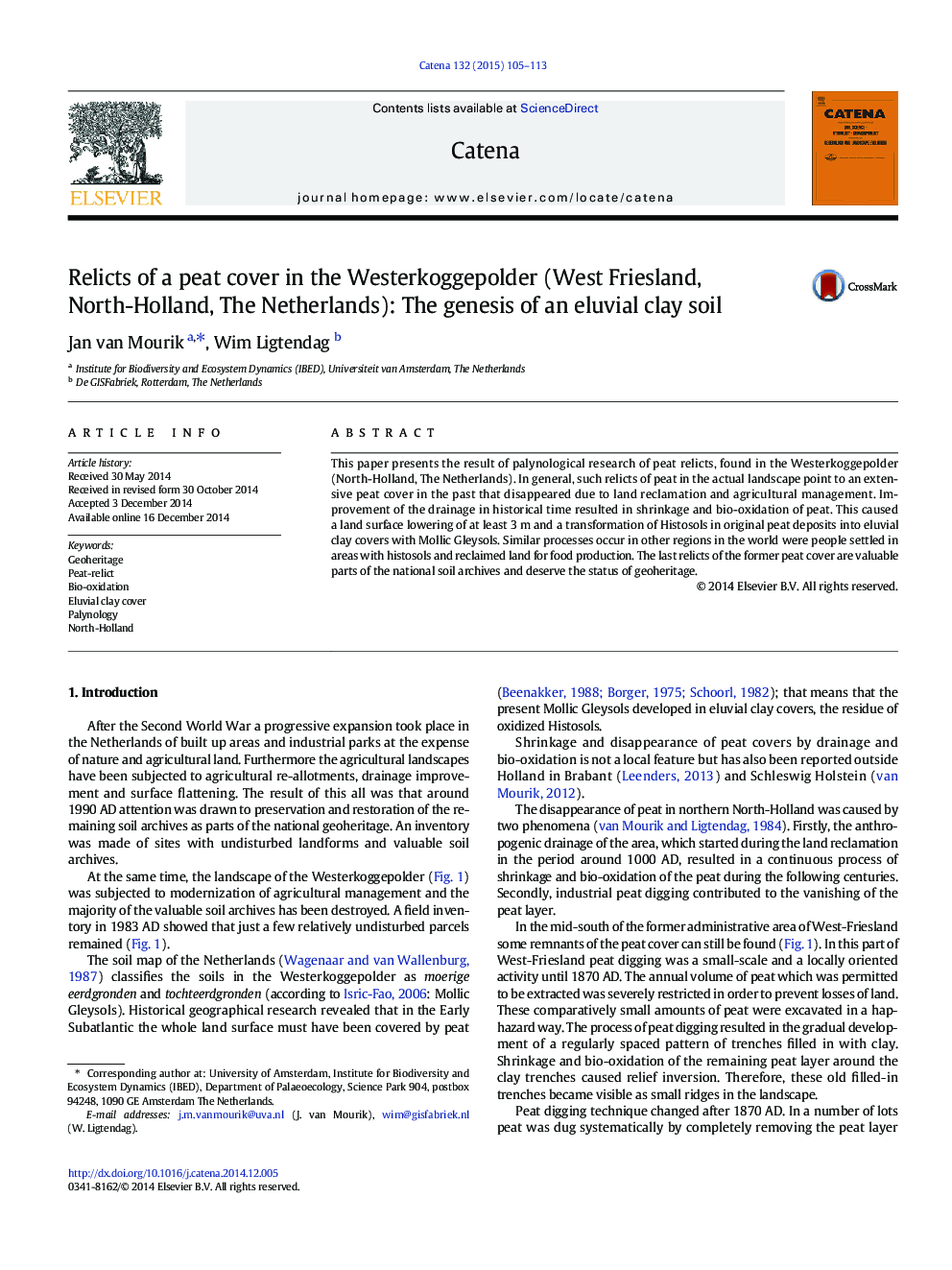| Article ID | Journal | Published Year | Pages | File Type |
|---|---|---|---|---|
| 4571166 | CATENA | 2015 | 9 Pages |
•The main soil type in the Westerkoggepolder is now a Mollic Gleysol.•This soil developed in an eluvial clay cover after bio-oxidation of a former Histosol.•Historical land use caused bio-oxidation of peat and land surface subsidence.•The relicts of peat in the Westerkoggepolder are valuable soil archives.•Such soil archives deserve conservation as part of the geoheritage.
This paper presents the result of palynological research of peat relicts, found in the Westerkoggepolder (North-Holland, The Netherlands). In general, such relicts of peat in the actual landscape point to an extensive peat cover in the past that disappeared due to land reclamation and agricultural management. Improvement of the drainage in historical time resulted in shrinkage and bio-oxidation of peat. This caused a land surface lowering of at least 3 m and a transformation of Histosols in original peat deposits into eluvial clay covers with Mollic Gleysols. Similar processes occur in other regions in the world were people settled in areas with histosols and reclaimed land for food production. The last relicts of the former peat cover are valuable parts of the national soil archives and deserve the status of geoheritage.
